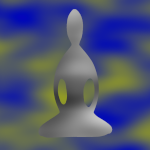Dear Friends,
The eighth factor of the eightfold path is right or wise samadhi. Samadhi is often translated as “concentration”, but as Ajahn Sucitto writes:
Let’s look at the idea of concentration, or samādhi. When you hear those four little syllables con-cen-tra-tion, what do they imply to you? … You probably get a sense of doing something, working hard at it to get it right. That’s the normal take. We clench up, get tight, and go for it. It’s intensive practice … . No slacking! With this kind of thinking, we rev up the controlling systems, the duty systems, the work systems, the ‘get-it-right’ systems. Right there is stress. A line of tension starts to form across your brow.
We want to get some enjoyment, so we look for legitimate ways to avoid ‘The Practice.’ We need food for the heart, and if we don’t get our happiness and ease in Dhamma practice, then we’ll get it elsewhere. Read something, eat something, or go for a walk to relax. But what if samādhi was a relief, even accompanied by the enjoyment of feeling ‘at home’? What if samādhi was a matter of settling into a unified state? … samādhi is food for the heart, and its immediate cause is happiness — the happiness born of unplugging stress.
Ajahn Sucitto, “Samādhi Is Pure Enjoyment”
https://ajahnsucitto.org/articles/samadhi-is-pure-enjoyment/
In several of Gil Fronsdal’s talks, he reiterates that concentration practice consists of letting go and relaxing, rather than a forceful pushing through.
Concentration in meditation is not a laser-like focus originating in the “control tower” in the mind. Rather we cultivate it by physically and mentally settling our attention onto the object of focus with real intimacy. It requires letting go of distracting thoughts instead of forcibly pushing them away. To do this it helps to calm whatever mental energy is involved in any thinking. Establishing a firm but soft intentness to then stay focused is also helpful. Balancing this intentness with letting go into the object of concentration is useful.
It is best not to concentrate with brute mental force. Instead we can use our discernment to discover how to stay focused in a committed, relaxed way. …
It is also useful to explore how to enjoy the practice. Not only can concentration practice bring joy, it can also bring tranquility and peace, sometimes to a greater degree than is usually available in daily life. Even small amounts of meditative joy and peace are useful for encouraging greater concentration.
Right Concentration: The Eighth Factor in the Noble Eightfold Path
https://audiodharma.us-east-1.linodeobjects.com/documents/180/Right_Concentration_Study_Guide.pdf
And why do we practice samadhi? As Ajahn Sucitto points out, it’s a nourishment for the heart-mind. Gil also says, “such a mind provides the clarity for deep insight and wisdom. In particular, deep concentration leads to penetrating insight into suffering and freedom from suffering. This in turn leads to a direct understanding of how much the Four Noble Truths are true and useful.”
In your meditation or mindfulness activities today, I invite you to bring in this sense of letting go of distractions – maybe tuning into whatever pleasantness, delight or ease that might be available – and allowing a sense of relief, nourishment from allowing the attention to rest on just this – this breath, this step, this dish that’s being washed.
With good wishes,
Andrea
